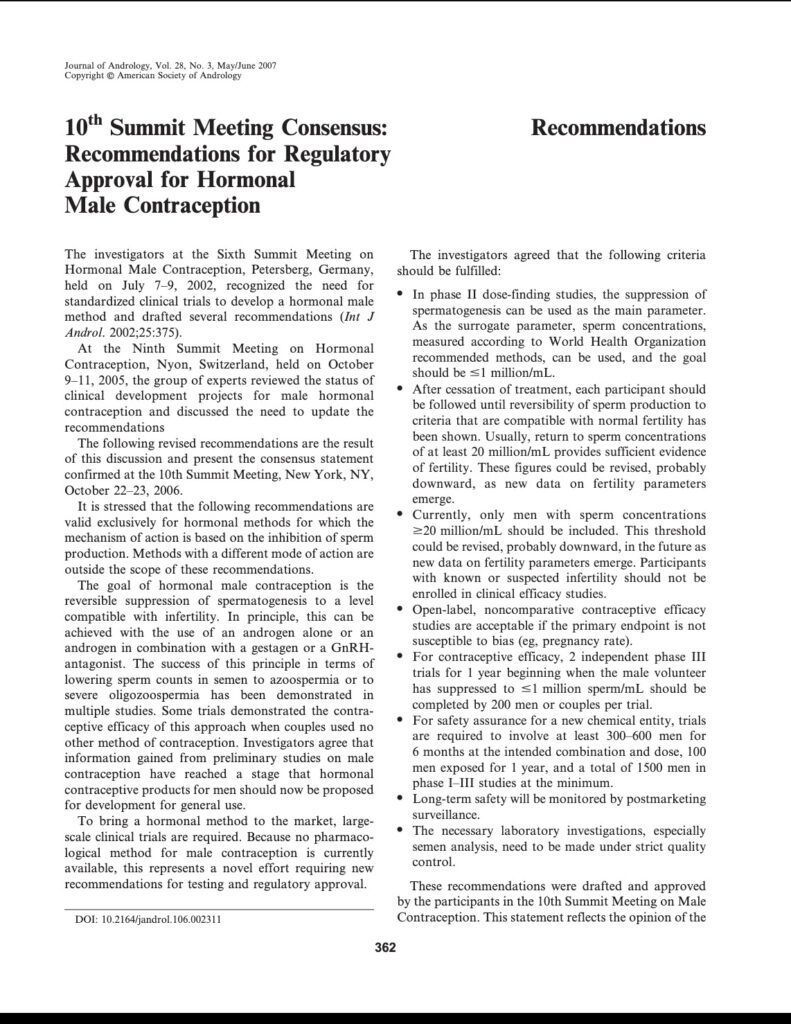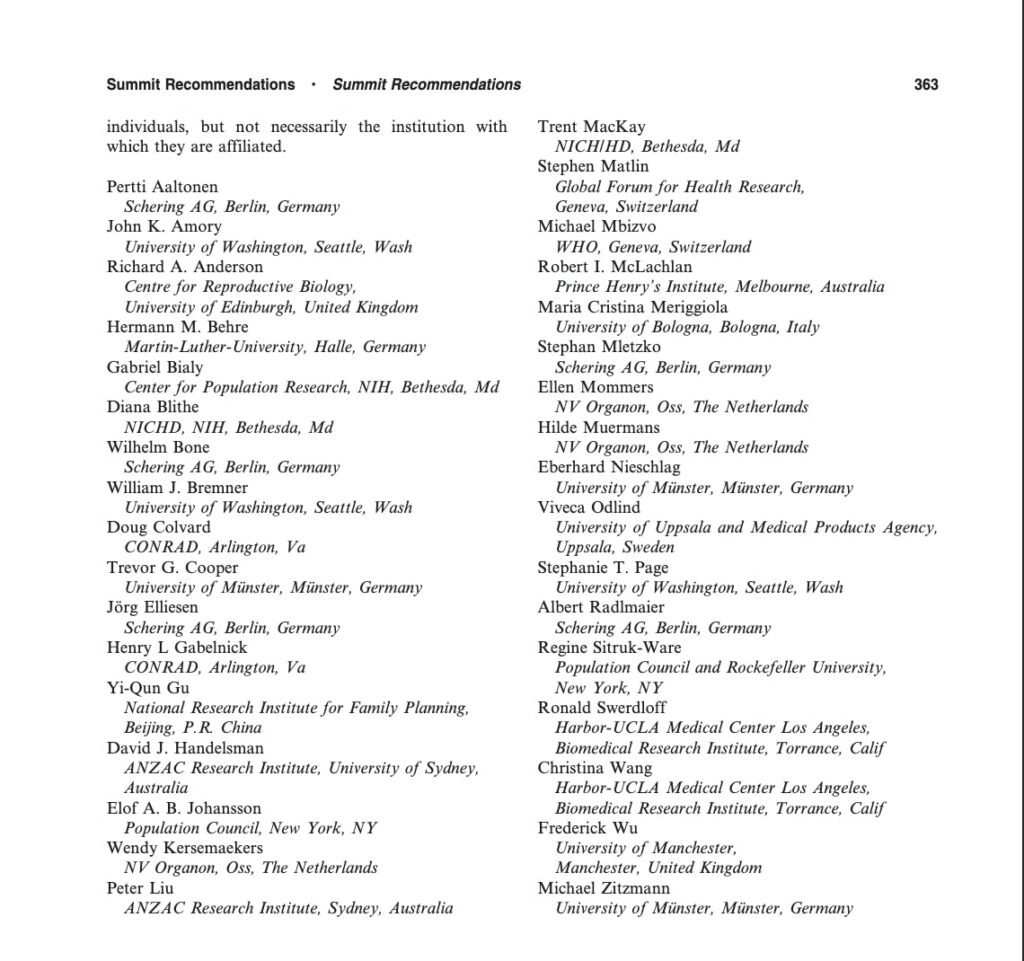Is it possible to achieve acceptable efficacy without stopping sperm production entirely? That's the big question.
This threshold is the result of numerous multi-center trials carried out by the WHO on the hormonal method. In the course of these tests, it was shown quite clearly that below 1 million/ml, the risk of pregnancy was less than 1. In other words, efficacy was over 99%.
It was this highly effective condition that made it possible to establish and make internationally acceptable that a concentration of less than 1 million/ml spermatozoa enabled a person with testicles to be considered as contracepted.
This was officially written in 2007 at the "10th Summit Meeting Consensus: Recommendations for Regulatory Approval for Hormonal Male Contraception":


Then in 2023, it was validated by the international recommendations of the learned societies on the subject: "Practice and development of male contraception: European Academy of Andrology and American Society of Andrology guidelines".
Nevertheless, this single threshold is questionable from a scientific point of view. Indeed, it does not take into account the total number, or mobility. It is therefore imperfect and bound to be refined over time. But keep in mind that if you're below 1 million-ml you're considered over 99% contracepted, which is huge in terms of quality and managing the risk of unplanned pregnancy.
Disclaimer: The information provided in this FAQ is based on user testimonials and is for general information purposes only. It does not constitute medical advice, diagnosis or professional treatment. We are not medical doctors. Always consult a qualified healthcare professional for personalized and appropriate medical advice. We accept no responsibility for any consequences arising from the use of the information provided in this FAQ. Send us an e-mail.



